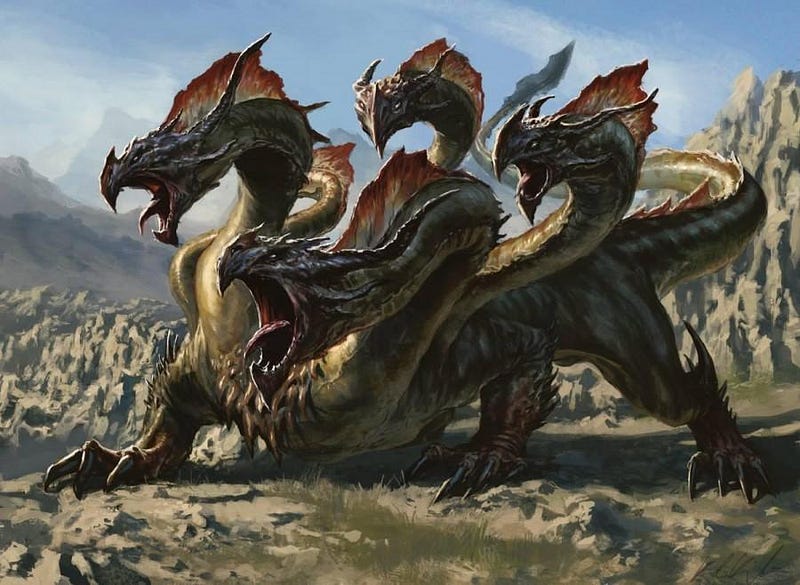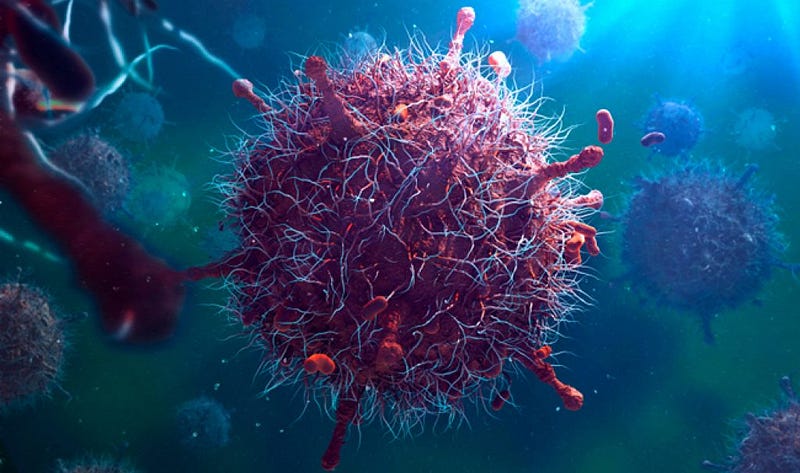
Nations and people talked constantly about how to resist the dragon, who they called Sam – though it had many other names – but they had a tough assignment. Sam’s heads left no doubt they would destroy the whole world if they felt threatened. Like most dragons, they hoarded resources and money, and with those assets installed and controlled leaders in other countries who would do their bidding.
Sam’s heads constantly spun webs of stories, with which to distract, confuse, and terrorize. Different heads told slightly different tales, though all agreed on the main points. These stories were its source of power.
One head glittered with gold and sparkled with dollar signs. That one spun narratives about money, how it was a natural thing like food or air, and people who had more of it deserved to live better and tell those with less what to do. More than that, money was alive, like a garden or a forest. If you held on to it, it naturally grew. If you didn’t have it, you suffered. So, even though it was only a made-up story, most people focused on and evaluated their lives by money, which made them miserable, because a few people controlled nearly all of it and didn’t share.
Another head was shaped like a missile and bristled with guns. It created horror stories of enemies in places far and near, of diseases and disasters that would come if they let their guard down. One head wore a white sheet and showed videos about how people who looked different were inferior and posed threats. Another appeared made of special effects and encouraged people to spend their days being entertained. One looked like a donkey for some reason, and one like an elephant. All of them had the same story about work: that it was necessary, the most important thing in life, but should be as miserable and poorly-paid as possible. These heads and others tried to show the world an intimidating collective face, but often fought each other in courts, media, and elections, or by assassination.
People living in Sam’s domain were of two minds about identifying with a dragon. The heads kept telling them that they were the greatest people in the world, and some believed those stories, even as their lives became meaner and more desperate. They clung to Sam’s narratives, and attacked anyone who challenged their chosen stories.
Propagandized as they were, the people might still have been able to fight the heads, but they were too divided. Some people supported one head, and some supported another, and constant fights broke out between them. The heads hired some people and dressed them in uniforms with guns to suppress the others, and a vast chain of prison camps sprang up in towns and villages across the land, with some residents caged and others paid to control them.
Sam seemed invincible. It was falling apart inside, but what could people do? They didn’t know the monster was held together by nothing more than stories and that those stories were increasingly disbelieved. They were too afraid, confused, and divided to fight back, and they lacked alternative narratives of their own. Then, when all seemed hopeless, there came a magic bug.

The bug’s name was Corolla, and in large doses, it could be fatal. Most people were scared of Corolla, but they were familiar with death and disease and prepared to go on living with this one. Some of the heads had different ideas, though. They thought a new bug could be a powerful weapon. They could use it to drive people into their homes while they stole larger fortunes and increased their power. Some heads thought their story of Corolla would win people to support them over other heads with different stories.
No one knew where Corolla came from. Some said from bats in caves; some from mammals in markets; some from the laboratories of the military. Some blamed distant countries; others blamed Sam. Whatever, various monster heads grabbed onto it and used it like a wrecking ball. They swung it back and forth, closing cities down, opening them up, blaming each other for the death and destruction.
Soon, most of the businesses, jobs, entertainment, and schools that made up Sam’s inner world lay in broken heaps. People who could still work, worked for less, slept in the street, ate what they could. It got harder for Sam to stomp around the world or pretend to be great when its insides were in so much pain.
At first, few noticed that their narrative shackles were crumbling along with their lives. How could people believe that wealth was based on merit and hard work, when workers deemed essential were paid minimum wage, while billionaires got free bailouts? How could people’s housing, food, and healthcare depend on jobs that didn’t exist? It made more sense that money should be a thing distributed to all, and people demanded universal income, healthcare, housing and education.
But Sam’s heads could not accept those demands; they would tear down the narrative structure that held the monster together. If people understood that scarcity is a myth, that private property, meritocracy, and race were only narratives without objective reality, Sam’s cruelty within and its wars without could not be justified. The heads turned against the people and against each other, seeking to keep their structure intact through force, creating a new narrative in which most of the people were enemies.
They kept slinging Corolla back and forth, and with each swing, things got worse. It was almost like the bug was inside Sam’s heads, making them do self-destructive things, as some germs can do to their hosts. People got hungrier, more desperate, lost their fear. They started seeing each other as brothers, sisters, and cousins instead of as rivals and threats.
They stopped accepting police violence, resisted, and some police eventually decided to serve people, not just protect property. They put down their guns and started acting as uniformed social workers, instead of as an occupying army. People won basic income, and suddenly jobs that killed souls and bodies had no takers. The owners had to make jobs better, and basic income and better jobs spread around the world. Of course, prices then rose, so people had to consume less, but they realized, after a moment’s media-inspired panic, that this, too, was a good thing. They tore up their lawns and parking lots and planted gardens to feed each other.
Corolla was still making people sick, and the people saw that guaranteed income was not enough to beat it, that we would have to have functioning communities and a government that cared. Then they realized that a caring government wouldn’t be killing people around the world. The soldiers demanded to leave their overseas bases and come home to help.
Because people were now collaborating instead of fighting each other, they had energy for caring about the animals and plants, the forests and water. Over time, the multi-headed dragon gradually shrank and transformed. Life became more pleasant; people started remembering joy and sharing their burdens and their love.

Obviously, my use of past tense has been a literary device. This story is happening now. It’s present tense, and many chapters remain to be written. We are here; we are desperate, but now is the time. Thanks to the bug, the fortress is no longer invulnerable. The monster’s inner weaknesses are exposed. Join together, fight together, reach out to each other.now. It’s present tense, and many chapters remain to be written. We are here; we are desperate, but now is the time. Thanks to the bug, the fortress is no longer invulnerable. The monster’s inner weaknesses are exposed. Join together, fight together, reach out to each other. Let’s write a blockbuster ending to our story.
— — — — — — — — — — — -
Thanks for reading! Follow me on Twitter @davidsperorn on Facebook https://www.facebook.com/david.s.rn.3 or my blog The Inn by the Healing Path www.davidsperorn.com/blog

Brings War of the Worlds to mind! Though there are some good possibilities, as it is, the growing inequality trumps everything.